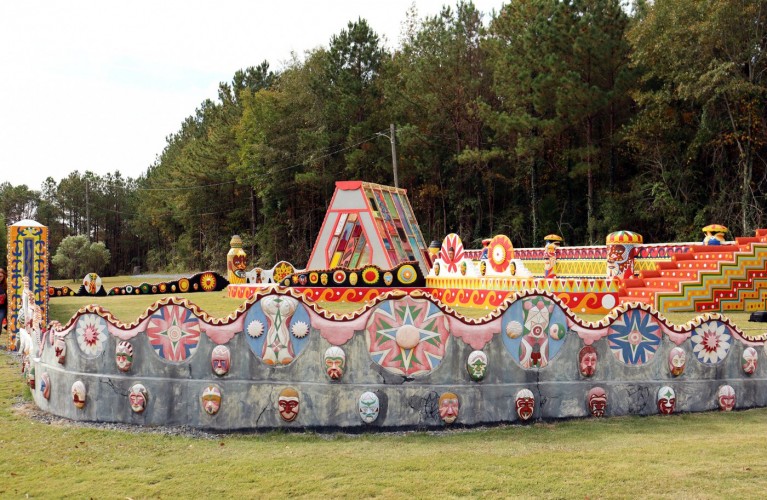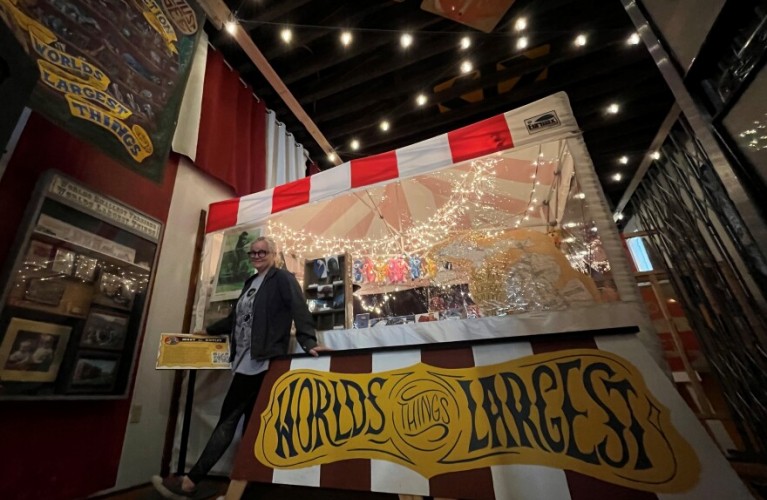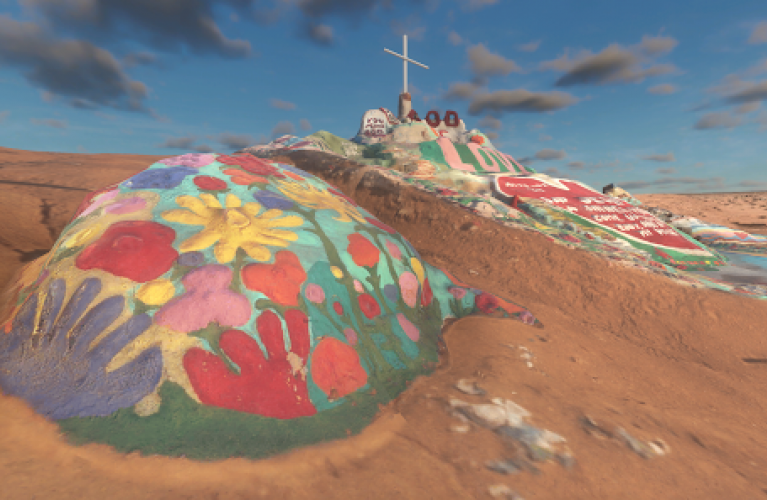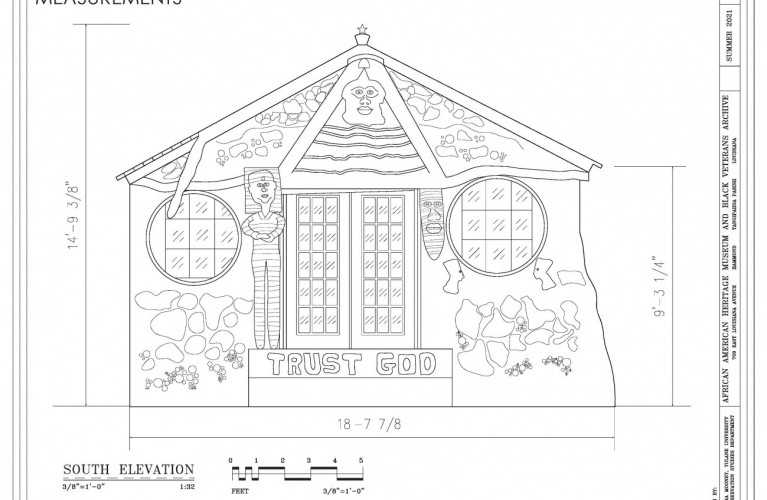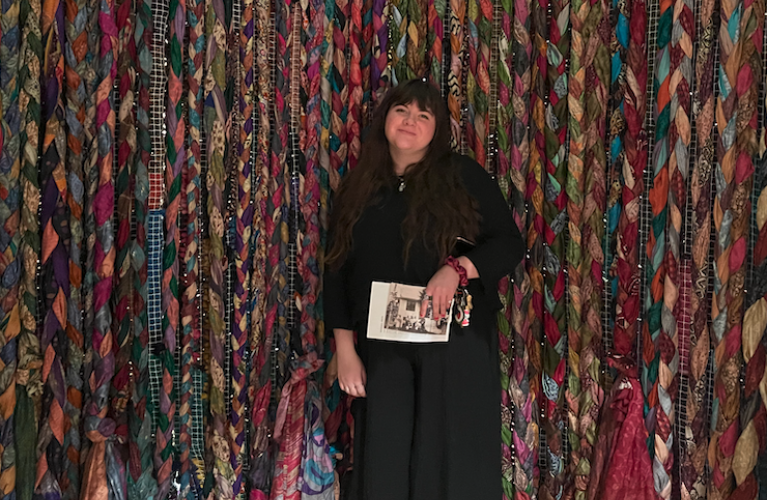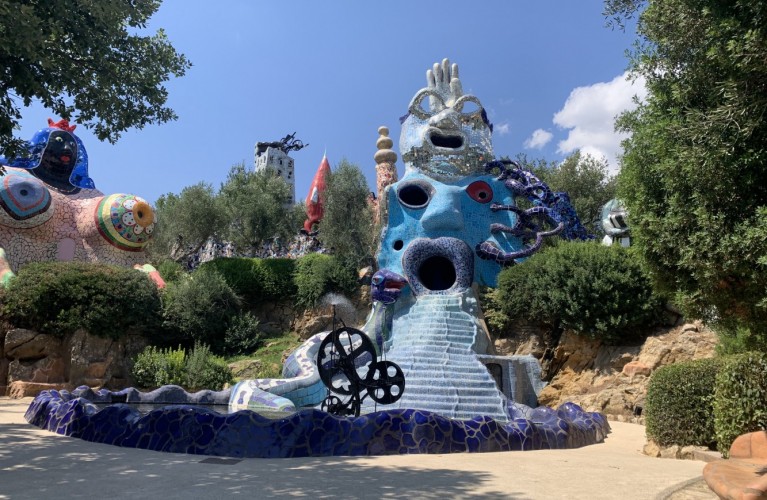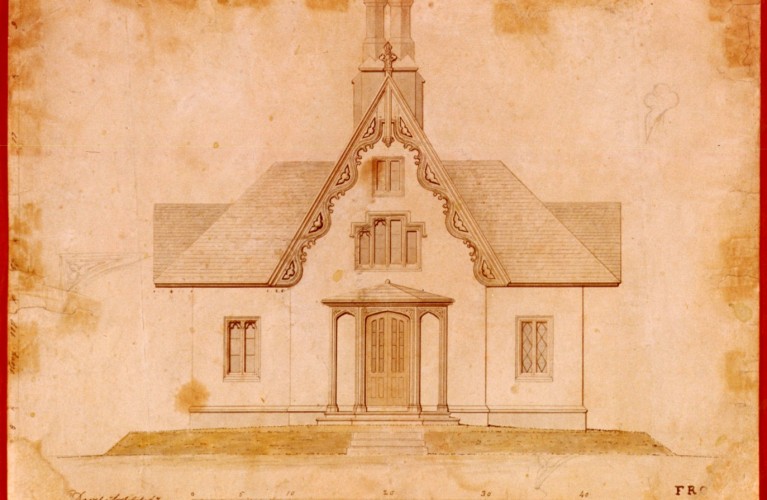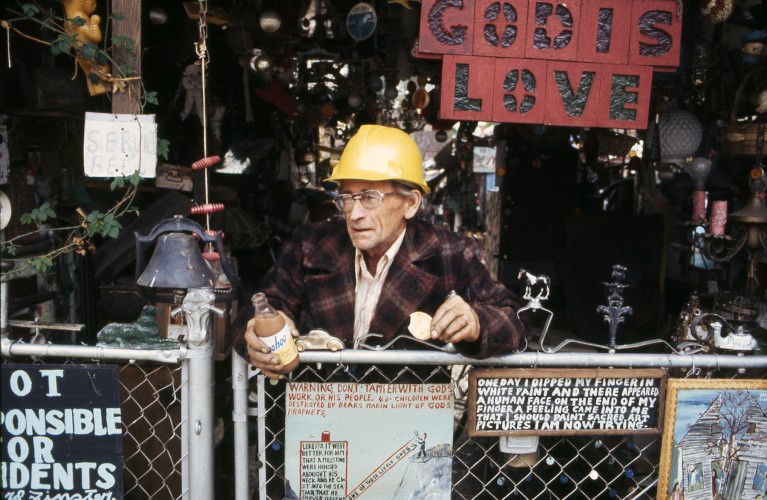Blog
Portal to Pasaquan
We were invited down to Columbus State University as artist in residents to create a project using Eddie Owens Martin’s Pasaquan as a point of departure. Our idea was to create a portal connecting our world in Wisconsin with St. EOM’s site. Being inspired by both Eddie’s artwork and his way of building narratives, we developed a story of interconnected things, centering back to Eddie, which we used as our decision making tool in the creation of the portal. Eddie telling Jimmy and Rosalyn Carter’s fortunes, NASA’s Voyager Space Program, solar energy portals, St. EOM’s cosmic mirrors, the Buena Vista homemade space shuttle, and many other local tales and lore came to be our interconnected narrative web.
Interview with Erika Nelson: Expert on World's Largest Things
Erika Nelson is a visionary artist, educator and one of America’s foremost experts and speakers on the World’s Largest Things. She is a national researcher and speaker on Grassroots Art environments, Roadside Attractions and Architecture, and the World’s Largest Things. Nelson is also the founder and curator of a unique and innovative traveling roadside attraction and museum called “The World’s Largest Collection of the World’s Smallest Versions of the World’s Largest Things.”
Salvation Mountain – Now in 3D
Nothing beats the relentless march of time and elements, especially under a sun that bakes every surface in 120+ degrees days every summer. So it is no surprise that Salvation Mountain, a literal man-made mountain 28 years in the making, has been falling apart and being built back up almost daily since Leonard Knight started putting his heart into it all those years ago.
Documentation Techniques for Artist-Built Environments: An Overview
Documentation—the systematic recording of a site’s size, orientation, character-defining features, and overall condition—is arguably the most important element of any preservation project. Particularly if the fate of a site is yet to be determined, having a detailed record of its current state guarantees its preservation, in a way. Whether a site is expected to be preserved in-situ or not, documentation should always be one of the first steps of any attempt in saving or rehabilitating an artist-built environment.
SPACES Intern Report: Rachel Allison
I started my internship at SPACES at the beginning of June, and the past five months have been some of the most rewarding of my life. I have spent this time digitizing SPACES’ large collection of slides by Seymour Rosen that documented art environments, researching these environments, and updating the information presented on the SPACES website. With these new scans, we were able to get clearer images from Seymour’s slides.
Out of Office: Italy
Earlier this year, my husband and I had the (overwhelming, outstanding, ecstatic) pleasure of spending a few weeks on vacation in Italy. To make the most of our time, we focused on the northern half of the country, traveling a big loop that began and ended in Rome. While there are an astonishing number of sights to see – too many, maybe – my biggest priorities were two of arguably the most fantastic art environments out there – Niki de Saint Phalle’s Tarot Garden and Sacro Bosco a.k.a The Monster Park of Bomarzo. Luckily, with Rome as our first and primary stop, visiting these sites turned out to be pretty easy.
Constructing the Miniature Museum: from the Irwin Rubin Archive
Many art environments either are or start as home-based collections connected to a larger creative practice. This can make these collections somewhat elusive to archives and scholars, as they often are eventually liquidated. Fortunately, there are instances where family or friends identify that they are faced with something unique or notable. Such is the case with Irwin Rubin, who passed away after planning a museum of miniatures that never saw completion. If realized, this miniature museum could have been an art environment. Carmelle Sadfie, a student of Rubin's and founder of the Irwin Rubin Archive, has shared Rubin's story with us here that prompts us to ask — What other would-have-been art environments are out there?
Build/Live/Work: In Conversation with Elizabeth Driscoll Smith
Elizabeth D. Smith is a Ph.D. Candidate in the History of Art & Architecture Department at the University of California Santa Barbara, specializing in American art and material culture of the twentieth century. Her dissertation, “Build/Live/Work: Artist-Built Environments and the Expanded Vernacular in the Twentieth Century,” examines the ways artist-environment builders responded to new forms of mobility and movement in the postwar era. In 2021, she visited the SPACES Archives to view source materials related to her dissertation.
Finster Fest: The Celebration Continues
Can you introduce yourself, your positions, and your work in the field of art environments? OK: Hi there! I’m Olivia Knauss and starting in December 2022, I joined the Paradise Garden Foundation team as their new Operations Manager. I had a very memorable first visit to Paradise Garden when I was researching the Garden for my graduate thesis at NYU a couple of years ago. When I visited, I rode out a tornado in one of the Garden’s three Airbnb Suites, with the Garden cats, Calvin and Hobbes. Walking through the Garden at night and reading Howard’s signs throughout was incredibly memorable. The experience stuck with me, even after I returned to NYC to finish up my master’s degree and embrace a whole new world of remote work during the onset of the pandemic. When I saw that the Garden was hiring, I had to apply.
SPACES Interview: Jenenne Whitfield on The Heidelberg Project
Earlier this year, Annalise Flynn at SPACES connected with Jenenne Whitfield, President and CEO of The Heidelberg Project in Detroit, Michigan, for an update on the acclaimed art environment created by Tyree Guyton. Many thanks to Jenenne for providing this in-depth interview, and we wish her the very best as she transitions into her exciting new role as Director of the American Visionary Art Museum in Baltimore, Maryland, this month!
